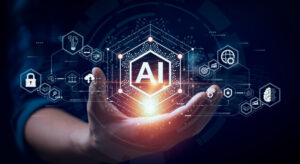Urban infrastructure – bridges, roads, railways, pipelines, power transmission towers and so on – must be inspected regularly to operate safely. Imagine if we used advanced technologies available to us, such as wireless sensors, mobile apps and machine learning, to remotely inspect and maintain this infrastructure. This could eliminate the need for regular daily inspections, save time and money for engineers and asset owners, and reduce the risks of working on job sites.
Everyone has experience of working with smart devices such as mobile phones and iPads. Using these technologies to perform technical and engineering work is a game changer. We have been developing “digital twins” – 3D-visualisation of in-service infrastructure – to monitor infrastructure performance under various service conditions and make intelligent maintenance decisions.
The digital model is the twin of the real infrastructure. Wireless sensors on the structure transfer performance data to our computer. We can see the performance of the infrastructure in real time online.
What are digital twins and what can they be used for?
This is extremely useful for engineers who need to regularly monitor the performance of infrastructure. They make critical maintenance decisions about which structural elements need to be repaired or replaced, and when this must be done, to ensure the infrastructure is safe.
How are digital twins created?
Digital twins are essentially a digital replica or a virtual model of a process, product or service. The concept of creating digital twins is still relatively new for civil and infrastructure engineers.
In the Netherlands, digital twins are being developed for operation at the Port of Rotterdam. A team at the Norwegian University of Science and Technology is working on a digital model of an operating crane.
This crane collapse killed one person and seriously injured two others in central Manhattan in 2016. Brendan McDermid/Reuters/AAP
To develop digital twins for intelligent infrastructure maintenance we must integrate a variety of disciplines. These include 3D visualisation, wireless technology, structural engineering and Internet of Things. The output is a digital model of the physical infrastructure, which can be seen on a PC, tablet or mobile phone.
Looking at their smart device at home or in the office, an engineer can observe all deformations, deflections, cracks or even stresses due to various loads (such as traffic or wind). The intelligent digital twin model can also suggest appropriate maintenance decisions.
Cost benefits add up to billions
We have more than 7,000 bridges in Victoria alone that need regular inspection. Add all the pipelines, highways, railways and so on, and that’s a huge maintenance program.
Trillions of dollars are spent each year on inspecting, monitoring and maintaining infrastructure around the world. The non-profit Volcker Alliance recently warned repair costs of deferred maintenance of the United States’ ageing infrastructure could exceed US$1 trillion, or 5% of the country’s gross domestic product. For local roads across Australia, maintenance and renewal costs between 2010 and 2024 total an estimated A$45 billion.
Digitalising the way we look after our infrastructure can make the process more accurate and less costly in the long term than traditional labour-intensive practices. Using a digital twin is expected to produce cost savings of 20-30%. Given the huge costs of monitoring infrastructure – in the US, bridge inspections alone cost US$1.35 billion a year – the potential savings are huge.
There are also several indirect benefits for the nation.
The COVID-19 crisis has highlighted the importance of reducing crowds in public places. Considering the huge workload on transport infrastructure like highways, buses and rail, any concept that can reduce daily travel is important. Digitalising infrastructure management and maintenance can help by reducing the need for inspectors and technicians to travel to projects.
Reduced travel, by reducing emissions, benefits public health and the environment.
What is being done in Australia?
In Australia, researchers from the School of Engineering at RMIT are developing digital twins for use in intelligent maintenance of almost all infrastructure across the nation.
Our current focus is on bridge and port infrastructure. However, soon we’ll be able to use the developed models for railways, water and wastewater pipelines, LNG, oil and gas pipelines, offshore platforms, wind turbines and power transmission towers.
RMIT researchers have also developed a cloud-hosted asset management platform, Central Asset Management System (CAMS). It uses discrete condition ratings given to components of infrastructure through inspections. We can use these ratings to develop predictive models to aid proactive planning and decision-making on civil infrastructure.
The system is being used commercially for property assets. Many public-private partnership clients are using the system for life-cycle modelling of buildings.
Proofs of concept have been completed for bridges, drainage and local council infrastructure. Funded research is in progress for road pavements and rail.
We are working on integrating live monitoring of infrastructure to progress the platform towards creation of digital twins. The system is available for trial by any interested infrastructure owners who wish to contact us.
This work represents a significant step in developing smart cities. It will help create a safer and healthier community.



